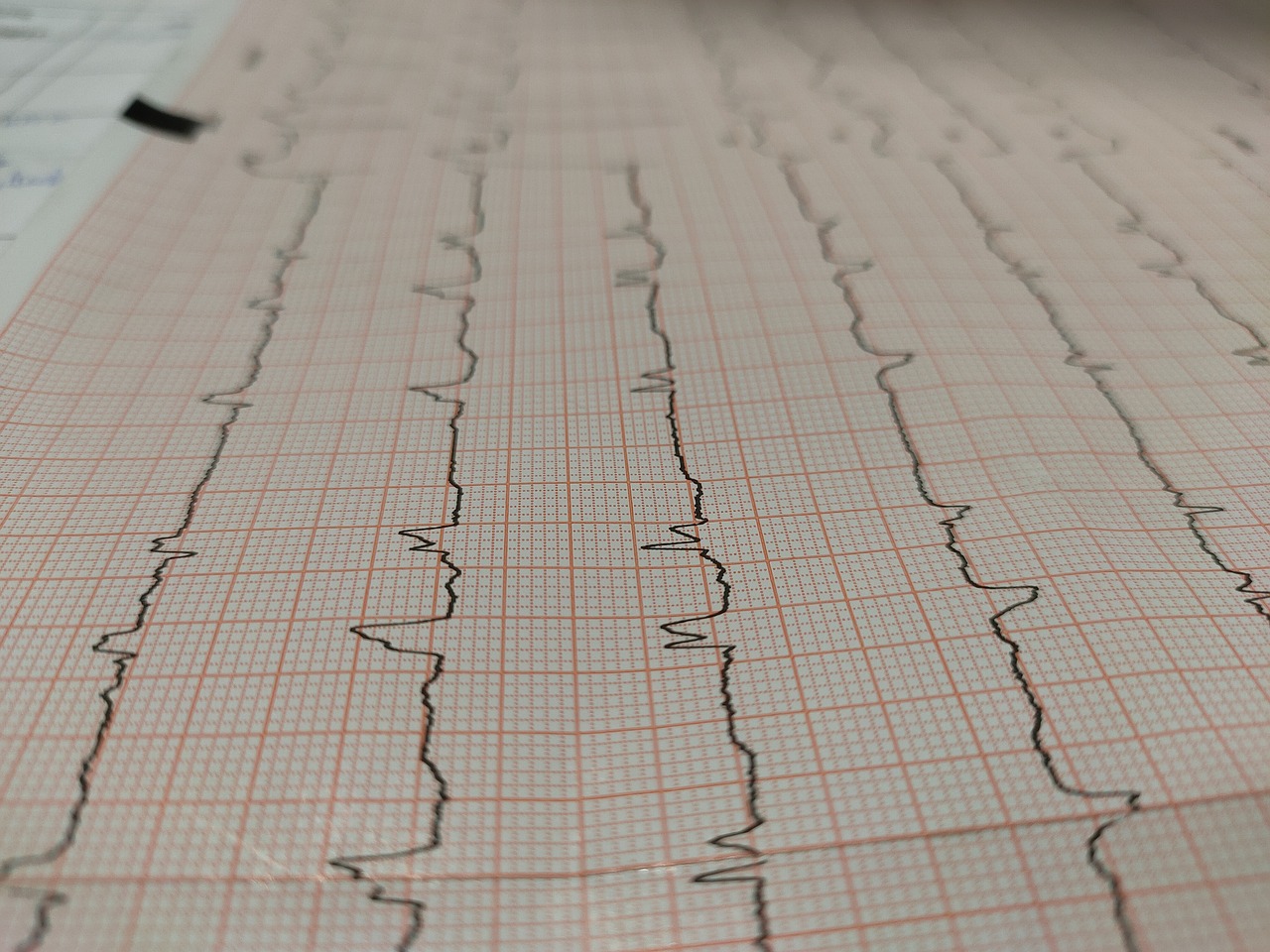

Sinus arrhythmia is an irregular heartbeat that can sound alarming. Perhaps you have a routine EKG and your doctor informs you that you have this condition. You might be ready to give him the third degree and pepper him with questions while thoughts of heart diseases or heart failure swim through your thoughts. But before you overreact, it’s good to listen to your healthcare professional and get all the details.
A lot of factors are considered when talking about sinus arrhythmia. In fact, did you know that a sinus arrhythmia can be from benign causes and it’s often quite normal and harmless? Let’s dive into what sinus arrhythmia is, it’s most common cause, and what patients can expect from this health condition.
There are two main types of sinus arrhythmia. One is something that healthy people present while another provides a differential diagnosis. We’ll talk about both. But, first, what do we mean by a normal sinus rhythm?
When we use the word “sinus” many people think we are talking about the nose and cavities in the face that become inflamed when you have a cold. But that is something completely different from what we are discussing here.
The sinus node, or sinoatrial (SA) node, is a group of cells located in the right atrium of the heart. It acts as the heart’s natural pacemaker by generating electrical signals that initiate every heartbeat. These electrical impulses cause the cardiac muscle to contract and keep blood flowing through the body.
A normal sinus rhythm refers to this regular, rhythmic beathing of the heart as controlled by the sinus node. Typically, in adults this results in a resting heart rate of between 60 and 100 beats per minute. Consider a couple of facts about a normal rhythm:
The time between each heartbeat is known as the P-P interval. In most people, there is a slight variation in this measurement of less than 0.16 seconds. The electrical impulses from the sinus node are transmitted in a consistent and orderly pattern. When a person’s heart rate increases above 100 bpm due to faster impulses from the sinus node, this is called sinus tachycardia. This is often in response to exercise, stress, or stimulants. If the heart rate drops below 60 bpm, it is called sinus bradycardia. This is normal in athletes and during deep sleep.
Now that we have defined what to expect in healthy individuals’ heart rhythm, what are the types of sinus arrhythmias?
Respiratory sinus arrhythmia occurs when the heart rate varies with the respiratory cycle. It’s quite normal to have a faster heart rate when you inhale and a slower heart rate when you exhale. It is a normal finding in healthy children and young adults.
As a person breathes, changes in the vagal tone – the measure of activity along the vagus nerve – cause a beat to beat variation based on the phase of breathing. This deviation from a regular rhythm can be quite significant, as much as 10 to 20 beats per minute or more! Yet, this alteration of the sinus rate is no cause for concern. It is actually a sign of a healthy heart.
This type of arrhythmia is not related to a person’s breathing and can sometimes be associated with underlying heart disease, other cardiac conditions, or the use of certain medications. Let’s look at some examples of cardiac arrhythmias that fall in this category.
Sick sinus syndrome is a type of heart rhythm disorder that affects the heart’s sinus node. It can cause slow heartbeats, pauses, or irregular beats.
This dysfunction of the sinus node is more common in older patients and most people have few or no symptoms. However, symptoms may appear and be mild or transient – making them difficult to recognize. These may include:
Talk with your healthcare professional if you have signs or symptoms of sick sinus syndrome. The symptoms listed above are common across a range of medical conditions, so it’s important to get an accurate diagnosis.
Multifocal atrial tachycardia (MAT) is a supraventricular tachycardia that results in a rapid and irregular rhythm. It is caused by too many electrical impulses being sent from the upper heart to the lower heart. In MAT, many locations in the atrium fire electrical signals at the same time. This causes extra beats and may make the heart work too hard or pump blood inefficiently.
MAT is most often seen in people over 50 and is common in patients with conditions that lower the oxygen level in their blood such as:
For most people, sinus arrhythmia is not a cause for concern. It is often seen as a sign of a healthy heart, especially in younger individuals. However, it can sometimes indicate other issues in older adults or those with underlying heart conditions where the abnormality can’t be explained by respiratory sinus arrhythmia.
If you have concerns about your heart rhythm, it’s always best to consult with a healthcare provider.
Sinus arrhythmia is typically diagnosed using an electrocardiogram (ECG), a test that records the electrical activity of the heart. The ECG can show the variations in heart rate that occur with breathing.
In some cases, additional tests may be performed to rule out other types of arrhythmias or underlying heart conditions.
For most people, no treatment is necessary for sinus arrhythmia, especially if it is the respiratory type and the individual is otherwise healthy. If sinus arrhythmia is associated with an underlying condition, such as structural heart disease, treatment will focus on managing that condition.
Treatment may include lifestyle changes, medications, or other interventions as recommended by a healthcare provider. Some medical conditions that affect the sinus rhythm require treatment with surgery such as the placement of an artificial pacemaker that helps keep heart speeds in control.
When the heart beats at an abnormal rate, it can often be attributed to a list of triggers. Here is a short list of contributing risk factors for arrhythmia.
Respiratory sinus arrhythmia is a normal variation, it doesn’t require prevention. For nonrespiratory sinus arrhythmia, managing underlying conditions and following a heart-healthy lifestyle can help reduce the risk. This includes regular exercise, a balanced diet, avoiding smoking, and managing stress.
The outlook for patients with sinus arrhythmia is generally very good, especially for those with respiratory sinus arrhythmia.
For those with nonrespiratory sinus arrhythmia, the prognosis depends on the underlying cause and how well it is managed. Discuss skipped beats or other symptoms with your doctor and consider various diagnostic options to help pinpoint the cause of any arrhythmia.
There are several other types of arrhythmias that may affect your heart.
Atrial Fibrillation (AFib): Rapid, irregular heartbeats originating in the atria (upper chambers) of the heart. This condition may be a result of premature atrial contractions that cause extra beats.
Ventricular Tachycardia (VT): Fast, regular heartbeats originating in the ventricles (lower chambers) of the heart.
Premature Ventricular Contractions (PVCs): Extra heartbeats that begin in the ventricles and disrupt the regular heart rhythm.
Respiratory sinus arrhythmia is a common and usually benign condition that reflects the natural variations in heart rate with breathing. While it is generally not a cause for concern, it is important to monitor heart health and consult with a healthcare provider if there are any unusual symptoms or underlying conditions.
Regular check-ups and a healthy lifestyle can help maintain heart health and address any potential issues early on.
If you have any concerns about your heart rhythm or overall heart health, don’t hesitate to speak with your cardiologist. They can provide personalized advice and ensure that your heart is in good shape.

0 comments